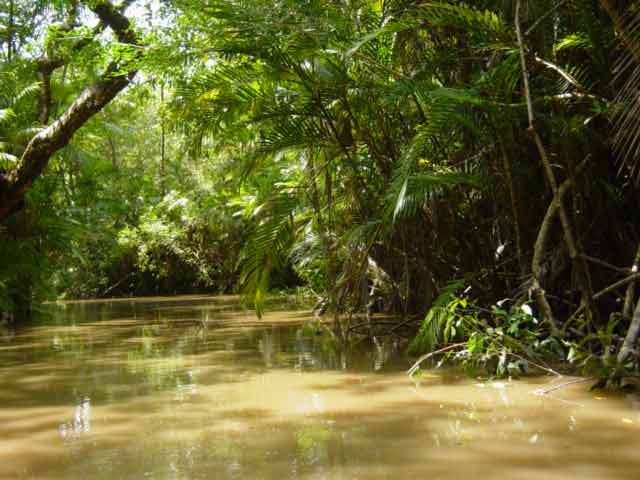Amazon floodplain trees emit as much methane as all Earth’s oceans combined

An international team of environmental scientists, including Dr Emanuel Gloor from the Priestley International Centre for Climate at the University of Leeds, have discovered that trees growing in the Amazon floodplains surrounding the Amazon River emit as much methane into the atmosphere as all of the world’s oceans.
The study, led by scientists from The Open University (OU), found that these trees growing in seasonal wetland areas of the Amazon contribute between 15.1 and 21.2 million tonnes of methane to the atmosphere every year, comparable to 18 million tonnes from the oceans*, or 16 – 27 million tonnes from Arctic tundra wetlands.
Methane is roughly 34 times more powerful than carbon dioxide at trapping heat in the atmosphere.
Conducted in collaboration with academics from the University Federal of Rio de Janeiro, the Universities of Linköping, British Columbia, and other partners, the research measured the gas emissions from the trunks of over 2,300 Amazonian floodplain trees. It found that the trees, which act as chimneys, funnelling the methane produced in the soil, are the source of the largest diffusive emissions ever recorded in wetlands.
Lead investigator Professor Vincent Gauci of the Open University said: “Great swathes of the Amazon become flooded forest for a large part of the year, which are ideal conditions for the production of methane. However, methane emissions measured from the water surface over the last few decades didn’t add up to what satellites and models were suggesting was the real amount of methane coming out of the Amazon. We have discovered that large emissions from trees, sometimes flooded by up to 10 meters, fill this gap.”
The research, ‘Large emissions from floodplain trees close the Amazon methane budget’, is published Nature.
See also this guest post on Carbon Brief
